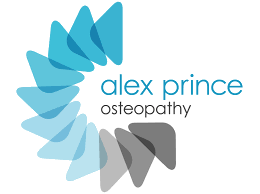As a Bristol Osteopath, many of the common patient complaints I treat are related to the problem with poor sitting posture. As such, I often treat and advise them on what to do about it.
What are common issues/problems with poor sitting postures?
- It puts an unnecessary strain on the body
- Causes disruptive aches and muscular tension
- Is a precursor to musculoskeletal conditions
- Can cause low back and neck issues
- Can be a cause of headaches in patients
- Is reported to reduce workplace productivity
- May reduce efficiency in the respiratory system
- Can burden existing respiratory conditions
- Can cause compression of abdominal organs
- Can reduce efficiency of digestive system
- May inflame existing digestive issues such as IBS
I ask patients with poor sitting posture and associated issues to look at the following in their day-to-day lives to help improve their immediate issues around posture and sitting:
How are you sitting - are you sitting well or slouching?
Assess your work station, check your chair height and screen height are correct to allow you to sit better.
When sitting, aim to maintain the natural hollow lumbar (low back) curve of the spine.
The natural spinal curve should be maintained as a gentle S-shape (when viewed from the side).
When we slouch, this S shape is lost and the spine becomes C-shaped (viewed from the side).
This detrimentally loads the discs, joints and muscles in the lower back.
How can sitting posture be improved?
- When sitting ensure your knees are lower than your hips: this helps to maintain a good spinal curve. Adjust your chair to allow for this.
- Check chair height
- Check screen height (top of screen in line with eyes)
- Sit less
- Periods of standing are helpful
- Avoid extended laptop work - If you do use a laptop then raise it up and use a separate keyboard
- Consider an adjustable desk
- Take Micro Breaks every 20 minutes
- Move regularly to stimulate body functions
Are there proactive measures you can take to help with sitting posture?
A few simple but effective steps can help with poor posture, such as:
- Working on core strength to help maintain natural spinal curves and healthy posture
- Engage in core-based exercises such as Yoga and Pilates
- Hydrate regularly throughout the day
- Move often and keep your body active
- Prioritize sleep, to aid overall body recovery
To find out more about Micro Breaks, please visit here.
Here are some of my favourite posture and sitting tips.
Read about how a Bristol Osteopath can help you with spinal conditions and back pain here.
If you would like to discuss how osteopathic treatments in Bristol could help you with poor posture, please book a consultation with me online here.
My Bristol osteopath clinic is fully open so if you’re looking for Covid-safe treatments, please read this news post to find out about the measures in place at my Henleaze osteopathy clinic for all patients.
To find out more about the full range of osteopathic treatments that I provide in Bristol, please visit here for details.

